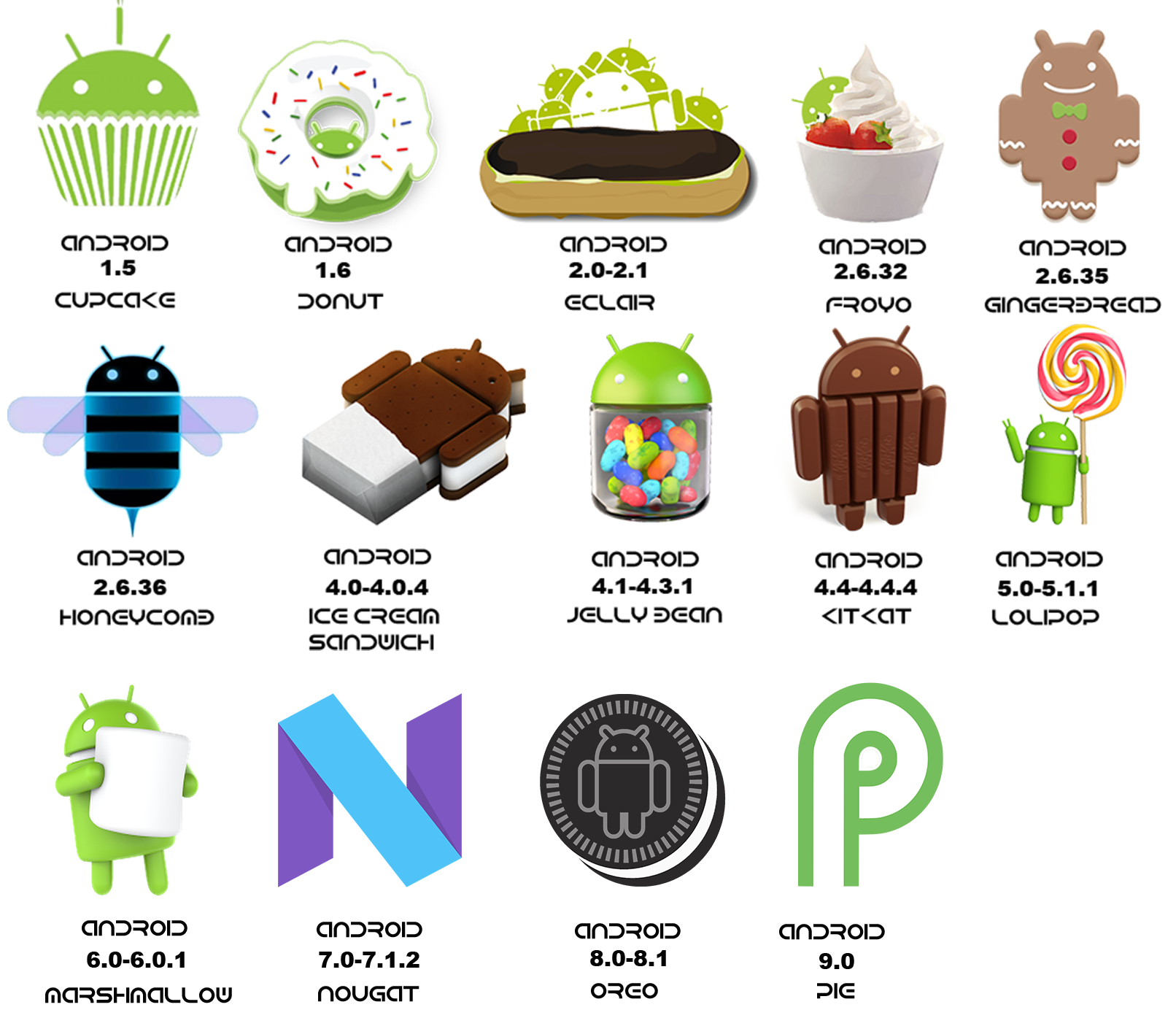What is Android ?
Android has been developed by Open Handset Allaboration,ledby Google,and other companies,and is an open source
operating system for Linux for mobile devices such as smartphones and tablets.
Android Inc. Founded in October 2003 in Palo Alto, California by Andy Rubin, Rich Miner, Nick Sears and Chris White.
Google released Google's first beta version of the Android Development Software Kit(SDK) in 2007,the first commercial version being Android 1.0.
In 2007,Google released the first beta version of the Android Software Development Kit (SDK), the first commercial version being
Android 1.0 in September 2008, Multiple major releases, with the existing 9.0 Pie version released in August 2018, have gone through the operating system.
Since May 2017, Android has the largest installed operating system base with two billion monthly, active users.Free and open source software licenses are available for Android.
Under the GNU General Public License version, the most code is published by Google under the version 2.0 of the Apache license, and changes the Linux kernel.
History of Android

Features Of Android
Beautiful UI : The Android OS fundamental display offers a lovely and intuitive user interface.
Connectivity : iGSM / EDGE, CDMA, EV - DO, UMTS, Bluetooth, WIFI, LTE, NFC and WiMAX.
Storage : For data storage purposes, SQLite, a lightweight relation database, is used.
Media Support : AAC 5.1, MP3, MIDI, Ogg Vorbis, WAV, JPEG, PNG, GIF, BMP. AMR, AMR WB AMR, AAC, HE - AAC H.263, H.264,and MPEG-4 SP.
Messaging :SMS and MMS.
Web browser :Based on the open-source WebKit layout engine, coupled with Chrome's V8 JavaScript engine supporting HTML5 and CSS3.
Multi-Touch :Android has native multi - touch support that was initially available on HTC Hero devices.
Multi-Tasking :User can jump from one task to another and same time various application can run simultaneously.
Resizable Widgets :The widgets are resizeable, allowing users to expand or shrink to save room for more content.
Multi-Language :Supports single direction and bi-directional text.
GCM :GCM is a service that enables developers, without a proprietary sync solutions, to send short messages to their users on Android devices.
Wi-Fi Direct :A technology that lets apps discover and pair directly, over a high-bandwidth peer-to-peer connection.
Android Beam :A popular NFC - based technology that enables users to share immediately by touching together two NFC - enabled phones.
What is API level?
API stands for application program interface. API Level is an integer value which identifies there vision of the API framework provided
by an Android version. A Framework API for applicators to interact with the underlying Android platform provides the Android platform. The framework API consists of:
- A core set of packages and classes.
- A set of XML elements and attributes for declaring a manifest file.
- A set of XML elements and attributes for declaring and accessing resources.
- A set of Intents.
- A set of permissions that applications can request, as well as permission enforcements included in the system.
The following table specifies the API Level supported by each version of the Android platform.
| Code Name | Version Number | Linux Kernel Version | Initital Release Date | API Level |
| (No Code Name) | 1.0 | ? | September 23, 2008 | 1 |
| Petit Four | 1.1 | 2.6 | February 9, 2009 | 2 |
| Cupcake | 1.5 | 2.6.27 | April 27, 2009 | 3 |
| Donut | 1.6 | 2.6.29 | September 15, 2009 | 4 |
| Eclair | 2.0 – 2.1 | 2.6.29 | October 26, 2009 | 5 – 7 |
| Froyo | 2.2 – 2.2.3 | 2.6.32 | May 20, 2010 | 8 |
| Gingerbread | 2.3 – 2.3.7 | 2.6.35 | December 6, 2010 | 9 – 10 |
| Honeycomb | 3.0 – 3.2.6 | 2.6.36 | February 22, 2011 | 11 – 13 |
| Ice Cream Sandwich | 4.0 – 4.0.4 | 3.0.1 | October 18, 2011 | 14 – 15 |
| Jelly Bean | 4.1 – 4.3.1 | 3.0.31 to 3.4.39 | July 9, 2012 | 16 – 18 |
| KitKat | 4.4 – 4.4.4 | 3.10 | October 31, 2013 | 19 – 20 |
| Lollipop | 5.0 – 5.1.1 | 3.16 | November 12, 2014 | 21 – 22 |
| Marshmallow | 6.0 – 6.0.1 | 3.18 | October 5, 2015 | 23 |
| Nougat | 7.0 – 7.1.2 | 4.4 | August 22, 2016 | 24 – 25 |
| Oreo | 8.0 – 8.1 | 4.10 | August 21, 2017 | 26 – 27 |
| Pie | 9.0 | 4.4.107, 4.9.84, and 4.14.42 | August 6, 2018 | 28 |
